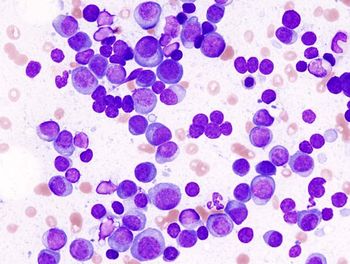
Adding Aprepitant Combo to Chemotherapy Regimen Reduced CINV in Women With Gastrointestinal Cancer
Young women with gastrointestinal cancers who received the FOLFIRI or FOLFOX chemotherapy regimens experienced a benefit in terms of reduced nausea and vomiting with the combination of aprepitant plus palonosetron and dexamethasone.
Combining aprepitant with palonosetron and dexamethasone increased antiemetic efficacy for young women with gastrointestinal cancer who received the fluorouracil, leucovorin, and either irinotecan (FOLFIRI) or oxaliplatin (FOLFOX) chemotherapy regimens, according to data published in JAMA Network Open.
For this phase 3, double-blind, placebo-controlled randomized clinical trial (NCT03674294), there was a history of little to no alcohol consumption and the chemotherapy regimen remained well-tolerated in this cohort of younger patients.
“This study demonstrates increased antiemetic efficacy of the combination of aprepitant with palonosetron and dexamethasone during FOLFOX or FOLFIRI chemotherapy,” wrote the investigators. “The aprepitant regimen was well tolerated by younger women with gastrointestinal cancer who had a history of little or no alcohol consumption.”
A total of 243 women from 4 different clinical centers in China had evaluable safety and efficacy results for analysis. Of that population, 125 patients were assigned to the aprepitant group and 118 patients to the placebo group. The mean age of this cohort was 40.1 years.
The primary end point was the complete response rate, which was defined as the proportion of patients with no emesis episodes or rescue medications during the first cycle of therapy. Overall, the observed CR rate of 87.0% in the aprepitant group was significantly higher than the 66.7% CR rate for patients in the placebo group (P <.001). More, the CR rate for the aprepitant group was significantly higher than the placebo group during the acute (92.7% vs 75.8%; P = .001) and delayed (88.6% vs 70.0%; P = .001) phases of the trial.
The adverse events (AEs) profile was similar across both groups, with no aprepitant treatment-related grade 3 or 4 AEs observed in this research. A multivariable analysis found that aprepitant use was the independent factor associated with CR in the overall phase of the trial.
“The triple-drug combination of aprepitant plus palonosetron and dexamethasone was well tolerated in general,” wrote the investigators. “There was no significant difference in the total incidence of all-grade adverse events between the 2 groups.”
For patients in the aprepitant group, they received oral aprepitant at 125mg 60 minutes before chemotherapy on day 1 and oral aprepitant at 80 mg each morning of days 2 and 3. Palonosetron at 0.25 mg was given intravenously, and dexamethasone at 6 mg, was given orally 30 minutes before chemotherapy initiation on day 1.
For the patients in the control group, the regimen was the same with placebo instead of aprepitant.
The primary end point of this research was the rate of CR, with key secondary end points focusing on efficacy indicators such as no vomiting and no nausea.
One of the main limitations of this research centers on the subgroup analysis, where antiemetic effects of adding aprepitant to chemotherapy treatment was only numerically better for patients. More, future studies should investigate the FOLFIRI regimen with a larger sample size, as only 50 patients on this trial received the regimen.
“The FOLFOX and FOLFIRI regimens have shown survival benefits in treatment of gastrointestinal cancer; however, their use also increased the incidence of CINV compared with fluorouracil alone,” wrote the investigators.
Reference:
Wang DS, Hu MT, Wang ZQ, et al. Effect of Aprepitant for the Prevention of Chemotherapy-Induced Nausea and Vomiting in Women. JAMA Network Open. 2021;4(4):e215250. doi:10.1001/jamanetworkopen.2021.5250
Newsletter
Stay up to date on recent advances in the multidisciplinary approach to cancer.

















































































